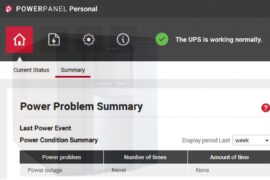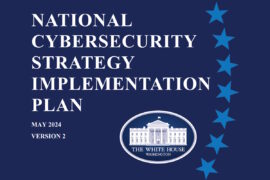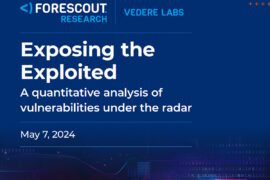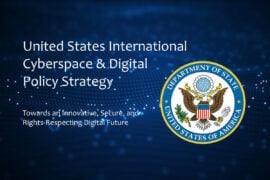Securing cloud, IIoT in Industry 4.0 emerges crucial for protecting industrial operations across OT/ICS environments

Organizations are increasingly forced to protect their cloud and IIoT in Industry 4.0 across OT/ICS (operational technology/industrial control systems) environments to bring about improved safety and efficiency across industrial operations. Increasing interconnectedness of devices and systems in the industrial landscape has heightened the risk of cyberattacks and data breaches significantly. To deal with these challenges, organizations must implement robust security measures such as data encryption, access control, and monitoring tools that are essential to safeguard sensitive information and prevent unauthorized access.
One effective strategy for protecting the cloud and IIoT (Industrial Internet of Things) in Industry 4.0 is to implement strong access control mechanisms that limit the exposure of sensitive data to unauthorized users. This can include using multi-factor authentication, encryption, and role-based access control to ensure that only authorized personnel can access critical systems and data. Additionally, organizations should regularly monitor and update their security protocols to stay ahead of evolving cyber threats.
Apart from access control, organizations should invest in security solutions that can detect and respond to cyber threats in real-time. This can include deploying intrusion detection and prevention systems, security information and event management tools, and endpoint protection solutions. By taking a proactive approach to security, organizations can minimize the risk of cyber incidents and ensure the resilience of their industrial operations in the face of emerging threats.
Regularly monitoring and updating security protocols has also emerged as being crucial in the rapidly changing cyber landscape. By investing in advanced security solutions, organizations can better protect their sensitive data and critical infrastructure from cyber attacks. With the deployment of intrusion detection and prevention systems, organizations can quickly identify and respond to potential threats before they escalate into major security breaches. Ultimately, taking a proactive approach to cybersecurity is essential for safeguarding industrial operations and maintaining business continuity in the digital age.
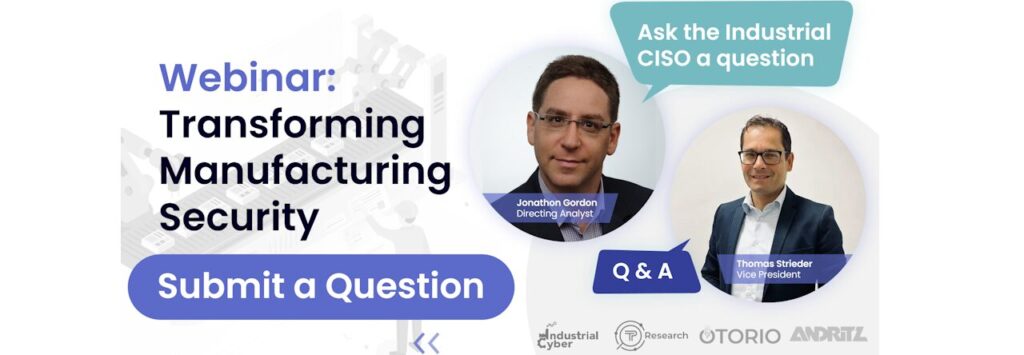
Exploring challenges in securing cloud and IIoT in Industry 4.0 environments
Industrial Cyber reached out to industrial cybersecurity experts to examine the key challenges in securing cloud and IIoT in Industry 4.0 environments, particularly in OT and ICS environments. They also analyze how businesses and industries are adapting their cybersecurity strategies to address the unique vulnerabilities of cloud and IIoT systems in the context of Industry 4.0.

“As industry networks become more connected, the attack surface increases. Attackers are constantly looking for new systems to exploit, and anything that has connectivity will be targeted,” Ruben Lobo, director of product management at Cisco IoT, told Industrial Cyber. “While most modern enterprise infrastructure, cloud technology, and security systems are up to date, this is not the case for OT and ICS systems, which can be dated and vulnerable. Organizations must know what potential exposures exist in their networks so they can implement cybersecurity rules that address the appropriate risks; otherwise, they are left exposed.”
Lobo added that operations teams want the benefit of newer industry 4.0 applications, but risky shadow IT practices, such as connecting industrial networks to cloud applications without an organization’s awareness can be very problematic. “Therefore, it’s critical that IT and security teams have visibility into OT network activities so they can monitor such practices and work with operations to ensure security. Businesses are starting to recognize this, and OT and IT are starting to collaborate.”

Cloud adoption in industrial settings offers enhanced project collaboration, allowing global engineers to work simultaneously on complex projects, Ronen Rabinovich, director of OT products at OPSWAT, told Industrial Cyber. “However, it introduces specific security concerns unique to industrial operations. While enterprise users prioritize solid security solutions for cloud data, industrial users face distinct security needs. These include ensuring data availability and integrity for IIoT projects, and addressing challenges like legacy infrastructure upgrades and network connectivity.”
Rabinovich identified that the key security challenges in Industry 4.0 environments include data privacy, compliance, integration complexity, network reliability, physical security, and vendor management. “Many industrial companies have taken an ad hoc approach to cybersecurity, solving immediate security problems with bolt-on solutions or adapting enterprise solutions to the plant. Most don’t have the luxury of implementing a complete solution from the ground up. But that doesn’t prevent the implementation of a new, all-encompassing strategy that takes a holistic approach to address the three pillars of ICS – system integrity, network security, and plant security,” he added.

Roman Arutyunov, co-founder and senior vice president of products at Xage Security, told Industrial Cyber that in Industry 4.0 environments, securing cloud and IIoT systems in OT and ICS environments presents many challenges. “Maintaining these interconnected systems’ availability, reliability, integrity, and safety quality is the biggest challenge. Operational disruptions or compromises can have cascading effects, leading to significant financial losses, reputational damage, and even worker safety hazards.”
Arutyunov added that compromises to OT and ICS systems can cause considerable production downtime and cause poor-quality products, leading to recalls and safety issues. The threats to these systems come from various sources, including third-party vendors, malicious actors, and disruptions in automation system controls and communications.
“To address these complex challenges, businesses and industries are increasingly turning to a Zero Trust approach, which emphasizes strict access controls and protection across multiple domains, including operational edge, enterprise, and cloud environments,” Arutyunov identified. “Techniques, such as segmenting enterprise and operational assets, not just networks, implementing privilege access management, secure remote access, eliminating VPNs, multi-layer MFA, and end-to-end data security, are effective ways for businesses and industries to mitigate risks.”
He added that zero trust helps bridge IT and OT teams, which often differ in their approaches and have different architectures for securing relevant parts. Zero trust can incorporate defense-in-depth principles and offer a middle ground, enabling organizations to secure their systems thoroughly without any single points of failure and without rearchitecting their environments.
Assessing trends, evaluating regulations and compliance standards
The executives examine emerging trends and best practices for securing cloud and IIoT deployments in OT/ICS environments to address cyber threats and enhance resilience. They are also evaluating how regulations and compliance standards influence the implementation of security measures in cloud and IIoT systems within Industry 4.0 environments.
Lobo identified that the best way to mitigate cyber threats to industrial systems is to focus on securing the users who access them.
“Organizations continue to be exploited by poorly implemented solutions that lack even basic security techniques; for example, some organizations still exist with wide open VPNs (virtual private networks) that lack MFA (Multi-factor authentication),” according to Lobo. “Because most cyberattacks target identity, the implementation of systems like Identity Threat Detection and Response (ITDR) and Remote Privileges Access Management gives security teams insight into the activities of their remote users and helps mitigate the risk of attacks due to poorly managed remote access.”
He added that meeting regulations and compliance standards are another driving force in cybersecurity adoption. “The recent NIS2 mandate specifically calls out MFA as a necessity. Cybersecurity mandates force organizations to adopt a minimum set of security capabilities designed to help ICS leverage the cloud in a secure way.”
“Some emerging trends we’re seeing to mitigate cyber threats and ensure resilience include a rise in adoption of secured remote access solutions, secure data sharing solutions, and cloud anomaly and breach detection solutions,” according to Rabinovich. “Best practices include data encryption, network segmentation, secure design and architecture, logging and monitoring, vulnerability management, supplier and third-party risk management, and regulatory compliance and standards adherence.”
Rabinovich recognizes security certifications are rapidly becoming important industrial network infrastructure selection criteria. “Customer approaches to OT cyber security strategy development typically rely on a combination of standard and proprietary mechanisms. IEC 62443 is gaining traction, particularly as its mandated use expands beyond critical infrastructure and into manufacturing operations. Some customers combine approaches, such as NIST Cybersecurity Framework, ISA 99, Center Internet Security (CIS), and/or International Organization for Standardization (ISO), with IEC62443,” he added.
Furthermore, Rabinovich said that the influence of standards organizations and other regulatory bodies groups has increased in recent years as industrial organizations look to align their cybersecurity strategies with the recommendations outlined by the regulatory community. “The most noteworthy of these organizations, frameworks, and standards include CISA, IEC62443, MITRE ATT&CK, NERC CIP, and NIST SP 800-82 (for OT infrastructure).”
“The adoption of zero-trust principles is emerging as a best practice, as it offers a robust mitigation strategy against ransomware attacks. Zero trust provides granular control over access privileges, reducing the risk of widespread impact in the event of a breach,” according to Arutyunov. “Manufacturing also embraces cloud adoption and promises scalability, agility, and cost-effectiveness. However, as organizations exchange sensitive information, such as proprietary manufacturing production data and recipes, ensuring high integrity and confidentiality is critical for safeguarding intellectual property and maintaining trust with partners.”
He added that with the increasing reliance on cloud and IIoT systems, cyber threats, particularly ransomware, pose significant challenges. “Ransomware is primarily introduced into these environments through legacy technologies like virtual private networks (VPNs), which offer broad access if compromised. With their outdated software and numerous vulnerabilities, VPN systems are susceptible to malware attacks, leading to widespread infiltration and disruption within the environment. We saw this happen with Citrix, Ivanti, and Cisco VPN products recently.”
Arutyunov further detailed that regulations and compliance standards can significantly influence the implementation of security measures in cloud and IIoT systems in Industry 4.0 settings. “However, notable challenges and gaps in enforcement need to be addressed for these measures to be effective. Take the TSA’s efforts to cyber-harden pipelines and rail systems, for instance. Initially, they were met with mixed responses from operators. While some took the regulations seriously and implemented the necessary solutions, others hesitated, citing the regulator’s lack of understanding of their business and operations. TSA revised the requirements by making them more performance-based.”
“Since then, efforts by agencies like the Cybersecurity and Infrastructure Security Agency (CISA) have applied the same regulations to cross-sectors. However, their performance-based nature leaves room for interpretation and inconsistent implementation,” Arutyunov pointed out.
“I hope regulatory bodies will address these enforcement gaps effectively to ensure security measures in Industry 4.0 settings,” Arutyunov added. “A notable example is the utility sector, where enforcement is much more stringent with regular audits by organizations like NERC CIP. Despite the challenges, there is reason for optimism. Although primarily post-breach, the increase in reporting requirements should serve as a catalyst for action. By fostering a collaborative approach between regulators, industry stakeholders, and cybersecurity experts, we can work towards a more proactive and secure environment for cloud and IIoT systems within Industry 4.0.”
Diving into influence of cloud and IIoT integration on cybersecurity
The executives explore the impact of integrating cloud and IIoT technologies in OT/ICS environments on cybersecurity risk management and incident response. Additionally, they look into how organizations are utilizing advanced technologies like AI, machine learning, and blockchain to bolster the security of their cloud and IIoT deployments in the context of Industry 4.0.
“Attacks are constantly evolving, and the threat intelligence we deploy in our systems must keep up with the ever-changing threat landscape,” Lobo said. “In terms of risk management, cloud is a good option because it is continuously updated with the latest and greatest threat intelligence, whereas on-prem only systems can become outdated if not actively maintained.”
On the topic of AI, Lobo identified that visibility is a key component of any cybersecurity strategy, and ICS networks are no different. “OT assets produce millions of data points, and AI is key to unlocking the true capabilities of this data by analyzing device properties and relationships in ways only an AI model can. AI will play a key role in detecting threats, and more and more businesses are starting to integrate their OT networks into the IT SOC where AI is being heavily leveraged.”
Rabinovich said that integrating cloud and ICS environments for cybersecurity risk management and incident response has several implications, including increased attack surface, incident response complexity, regulatory compliance challenges, and lack of qualified OT cybersecurity staff.
“Organizations are increasingly utilizing AI and ML to enhance risk detection and tracking, alongside deploying industrial decoys to trap attackers,” Rabinovich highlighted. “Additionally, they are leveraging cloud-based data aggregation for improved manufacturing productivity and predictive maintenance, while also intensifying operational resilience through expanded risk analysis and backup strategies, including techniques such as attack simulation.”
Integrating cloud and IIoT technologies into OT/ICS environments presents both opportunities and challenges for cybersecurity risk management and incident response, according to Arutyunov. “On the one hand, these advancements enable enhanced connectivity, data analytics, and automation, fostering efficiency and productivity in Industry 4.0 settings. However, they also introduce new vectors for cyber threats, which is why robust security measures and proactive incident response strategies are critical.”
He added that when it comes to AI, high-quality, tamper-proof data is essential for training AI models effectively, which blockchain helps ensure. AI is playing a pivotal role in bolstering cybersecurity posture. One example is by assisting organizations in understanding their security posture and identifying potential attack vectors. Through threat modeling and analysis, AI can help anticipate attack vectors and recommend proactive measures to mitigate risks.
“In the event of an incident, AI can aid in rapid response by providing real-time insights, contextual understanding, and actionable recommendations based on the organization’s specific environment and historical data,” Arutyunov mentioned. “Moreover, large language models (LLMs) are being trained on various APIs for various types of applications and can automate tasks such as script writing. By leveraging LLMs trained on diverse API environments, organizations can streamline incident response processes, enabling faster and more efficient execution of remediation actions without relying solely on manual intervention. These new advanced technologies have a lot of promise.”
Exploring cybersecurity frameworks and collaboration
The executives examine the role of cybersecurity frameworks, particularly those specific to OT/ICS, in guiding organizations to implement effective security measures for their cloud and IIoT initiatives in Industry 4.0. They also explore how industry leaders collaborate and share knowledge to promote a collective approach to securing cloud and IIoT in Industry 4.0, especially within OT/ICS domains.
Lobo identifies cybersecurity frameworks as critical to the adoption of Industry 4.0 technology. “Even today, dated frameworks and architectures like the Purdue model are heavily referenced because they provide organizations with a blueprint for how this technology should be implemented, and it’s important that industry leaders continue to collaborate and evolve on those models.”
“The ISA/IEC62443 security standard builds on the Purdue Model and requires segmenting industrial networks and applying strong access control policies for communications between zones. The cloud domain becomes a zone from which communications must be monitored and controlled,” according to Lobo. “To that end, a communications conduit must be clearly defined so security policies can be enforced. OT and IT security teams must work together to define these policies and ensure all cloud communications go through the conduit.”
He added that frameworks should provide guidance to innovate securely, but sometimes those frameworks become mandates that block organizations from adopting best practices. “Mandates like NERC CIP make it virtually impossible for some organizations to adopt cloud, and the effect is that they need to take advantage of the many benefits cloud technologies can offer.”
Rabinovich noted that integrating IT approaches to cybersecurity into the OT environment, as well as related technical developments in emerging areas, such as integrating cloud and IIoT technologies in OT/ICS environments, inherently requires a more holistic software-oriented approach compared with past OT practices.
“Cybersecurity frameworks for ICS play a vital role in guiding organizations towards effective security measures for their cloud deployments by providing structured guidance, best practices, and standardized approaches to risk management, security controls, compliance, and continuous improvement,” according to Rabinovich. “By adopting and adhering to these frameworks, organizations can enhance the security and resilience of their ICS environments in the cloud while effectively managing cybersecurity risks and compliance obligations.”
He added that industry leaders collaborate and share knowledge to foster a collective approach to securing the cloud in Industry 4.0 across OT/ICS domains through various efforts, including sharing threat intelligence, and public-private partnerships such as CIPAC and ENISA. “Industry associations and consortiums like IIC and NCCoE also provide platforms for knowledge exchange and development of tailored cybersecurity guidelines for ICS environments in the cloud.”
Arutyunov said that cybersecurity frameworks specific to OT/ICS provide structured guidelines, best practices, and standards tailored to the unique requirements and challenges of OT/ICS environments. “For instance, frameworks like the ISA/IEC 62443 series provide a comprehensive approach to cybersecurity by covering various aspects, such as risk assessment, system design, access and credential management, lifecycle management, incident response, and recovery. It gives organizations a roadmap to enhance security posture and mitigate cyber risk.”
He further highlighted that industry leaders increasingly recognize the importance of collaboration and knowledge sharing to foster a collective approach to securing cloud and IIoT in Industry 4.0, particularly across OT/ICS domains. “Collaborative initiatives, such as information sharing and analysis centers (ISACs), industry consortia, and working groups, bring together stakeholders from across sectors to exchange insights, share threat intelligence, and collaborate on developing innovative solutions to emerging cybersecurity challenges.”
Arutyunov concluded that by leveraging cybersecurity frameworks and participating in collaborative industry initiatives, organizations can gain valuable guidance, support, and resources to navigate the complex landscape of cloud and IIoT security in Industry 4.0.




